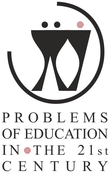| Abstract | School educational systems on the threshold of millennium all over the Europe are experiencing radical changes. Deliberation, which generates this changes, is mostly oriented into balancing which competences (capabilities) should educational system develop with the students, so they can successfully perform roles, that can be expected during their life, and therefore to create their own prosperity.
In this context it is exceedingly important to see curriculum aims
as global (and not as it happened at previous renovation; subjects dispersion). We have to think about a correlation of knowledge between the humanities, social sciences, natural sciences and technical fields and also their role (dimension) at forming entire personality for future grown. It is not possible to deny, that humanities, social sciences, natural sciences and their application: techniques are inseparable connected, because things are getting their practicability value (become logical) only in the field of application. (Foreign language, when or if we meet foreigner, mathematics, when we want to calculate something…). Natural science knowledge gets its meaning in application (techniques), and therefore gets its market value – that can led up to rise social welfare (prosperity). That however reflexively generates new impetus of society: art, culture, humanism…The circle is joined or even better, a vertical spiral is released (Picture 1).
it is highly important to use in this process methods, that's support such curriculum aims. In our research we proposed Problem-Based Learning (PBS). PBS was first established as part of the education of physicians in medical school over 40 years ago. Developed by Howard Barrows, this strategy has grown into an instructional approach which is finding success in elementary through high school. PBL is now a prominent strategy in many elementary schools through high schools.
|
